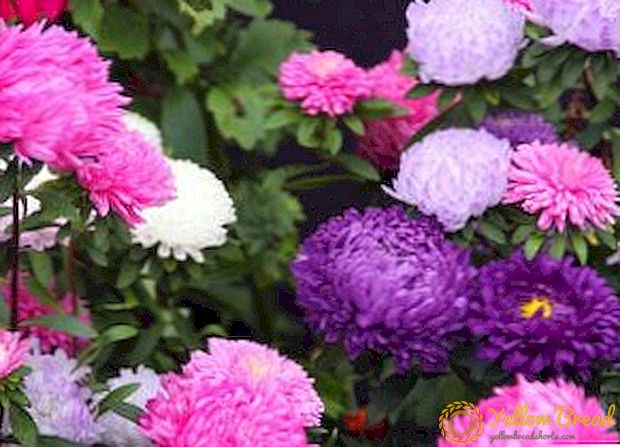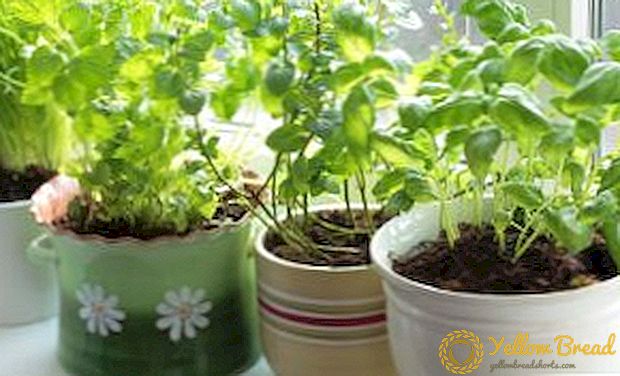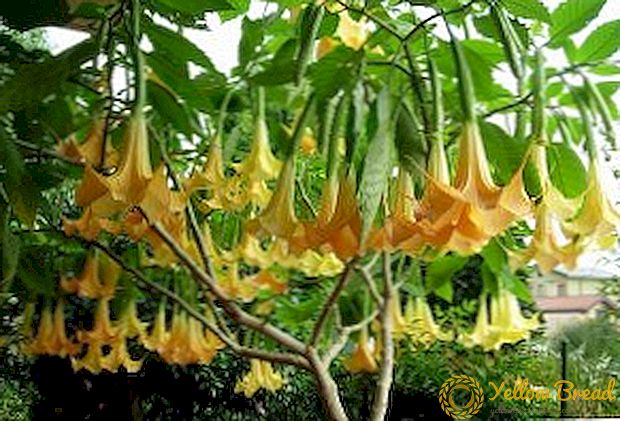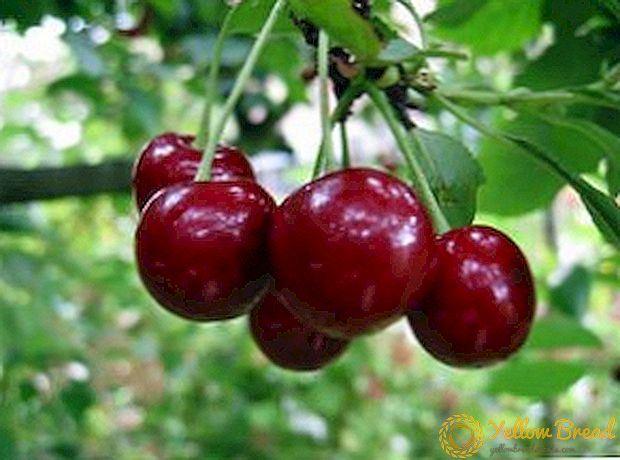 Decorative home palms have an unusually exotic look, are compact and fit perfectly in any interior. And it looks great as a single specimen, and the composition of palm trees with each other and other plants. With their help, create green cozy home islands like a winter garden. And in the summer, many varieties of indoor palms can be easily brought to the fresh air - to gazebos, flower beds, and flower beds.
Decorative home palms have an unusually exotic look, are compact and fit perfectly in any interior. And it looks great as a single specimen, and the composition of palm trees with each other and other plants. With their help, create green cozy home islands like a winter garden. And in the summer, many varieties of indoor palms can be easily brought to the fresh air - to gazebos, flower beds, and flower beds.
- Brahea (Brahea edulis)
- Butia (Butia capitata)
- Washington
- Washingtonia filifera
- Washingtonia Robusta
- Hyophorbe (Hyophorbe verschaffeltii)
- Hamedorea (Chamaedorea)
- Hamedorea high
- Hamedorea Graceful
- Hamedorea monochrome
- Hamedorea oblong
- Caryota
- Livistona (Livistona)
- Rapis (Rhapis)
- Hamerops (Chamaerops)
- Yucca
- Hoveya (Gouveia)
- Palm date
- Ropalostilis (Rhopalostylis sapida)
- Sabal
- Trachycarpus
Caring for a palm tree is not so difficult, and when the plant literally blooms from care, it quickly develops into a favorite activity that brings satisfaction and joy. This article describes the most popular types of home palms.
Brahea (Brahea edulis)
Homeland - Mexico. A flowering flowering palm tree, leaves - hard, fan, silver-green-blue. The trunk in places of fastening of leaves has small notches that remain after dead leaves. 
Light-requiring, but grows in partial shade. It needs periodic washing of leaves and spraying, watering is always moderate.
Brachea is divided into subspecies - edible, Brandegi, armed. Lower and smaller palm trees are quite suitable for apartments, while larger ones are suitable for large rooms. Despite the views, the Brahea palm tree, initially growing in a small pot, requires replanting in a larger size every 3 years.
Butia (Butia capitata)
Her homeland - the countries of South America, Brazil. Suitable for large spacious houses, offices, halls. Sheet length - up to two meters. Refers to feathery palms - each leaf consists of separate thin and long strips resembling feathers. This is a flowering species, the beginning of flowering usually in April-May. 
Washington
It is also called the North American palm tree. It is a fast-growing, hardy look, tolerates dry air well.
Homeland - Mexico, USA, where it is also known as the priest's skirt, because of its characteristic feature - all the dead fanlike leaves fall down, press against the trunk and overlap each other, which really resembles clothes.
Palm Washingtonia home has two varieties.
Washingtonia filifera
The second name is Washington. A fan palm blooming with white flowers. It reaches a height of 16-18 m, the length of the sheet reaches 2 m. The sheet is dissected into 1/3, and thin threads hang along the edges of the incisions.
Washingtonia Robusta
Washington is also called powerful. Palm tree up to 30 m in height with a strong powerful trunk, extended at the base. Leaves up to 1.5 m in length, dissected. Blooms in pink flowers.
Hyophorbe (Hyophorbe verschaffeltii)
Or Mascarena. A young palm tree of this type is similar in shape to a large vase or bottle; over the years, the trunk is aligned, and the shape of the vase becomes less pronounced.
The peculiarity of Vershaffelt palm is the spindle-shaped gray trunk.The leaves are green, long and thin, pinnate. Blooms with small flowers with a delicate pleasant aroma.
It is moisture-loving - needs watering, regular spraying and washing of foliage. Light-requiring, but the light is preferably diffused, rather than direct and bright.
This is one of the largest palm trees - it can grow up to 6, sometimes up to 8 meters high.
Hamedorea (Chamaedorea)
Or a Mexican bamboo palm. One of the most unpretentious types of palm trees. Constantly blooming, tolerates the lack of light, grows even in dark corners.
Needs regular spraying, watering and replanting - every 2 years. This palm tree has several varieties and names.
Hamedorea high
The highest and largest, reaches a height of 5 meters. It has very long thick branches. In the tub or pot can be planted simultaneously on several plants.
Hamedorea Graceful
This is a blooming palm tree. Flowers - yellowish-whitish peas (similar to mimosa), with a delicate aroma.The height of the plant is a little more than a meter, the leaves are fan-shaped, pinnate. Perfectly feels like semi-shady places, very unpretentious.
Hamedorea monochrome
It differs from the graceful thinner and long leaves, feathers.
Hamedorea oblong
It has a darker crown and sickle-concave leaves.
Caryota
Or a nut palm, an Asian palm, or a Fishtail palm. It has on the thin stems large bicopyular leaves in the form of an elongated fish tail. On the leaves from the base to the edge - strips of different shades of green.
It is a blooming species, but its peculiarity is that the palm tree blooms not regularly, but once, and the bloom itself lasts 5-6 years. Sun-loving and requires quite spacious rooms.
Livistona (Livistona)
Homeland - China. Moisture and light-loving bushy palm with large leaves. It is also called a palm tree with leaves like a fan, the leaves are shaped like an open fan. 
It does not grow very quickly and grows to 1-1.5 m (sometimes up to 2 m), so it is quite suitable not only for large houses, but also for apartments.
Rapis (Rhapis)
Homeland - Asia. This is a tall bush with longitudinally striped leaves. Very light and moisture-loving, it is necessary to take into account and create suitable conditions - good lighting, but without direct sunlight, spraying and sufficient watering. 
It needs an annual transplant, after 4-5 years - once every 3 years. It has subspecies Rapis High and Rapis multi-cut.
Hamerops (Chamaerops)
Homeland - Africa, the Mediterranean. This fan, multi-barreled, low, strong, with a thick crown palm. All tree trunks grow from one place-base. The leaves are pinnate, split, up to 1 m in length, with needle-like protective protrusions.
It is photophilous, loves and tolerates bright sunshine. Palm blooming, flowering time - April-June. Young palms are transplanted once every 3 years and adult plants once every 6 years.
Yucca
Or a Spanish dagger. Homeland - Central and North America. A tree with a rigid, sword-shaped, long and wide leaves plant. The leaves are collected at the base, forming a bundle or socket.
It blooms with white bell-like flowers. Light-requiring, even in the penumbra will grow poorly. It can grow up to 3-4 meters in height, so you need to select a spacious room for it.
Hoveya (Gouveia)
Or palm Kentia. Homeland - Australia. It is characterized by relatively short stems and beautifully contoured, slightly curved leaves. It reaches a height of 2-2.5 m, therefore it is suitable for fairly large rooms.
In addition, heat and light-requiring, although normally grows with artificial light. Behind it needs a little more careful care than for other types: regular spraying and wiping the foliage, watering with settled water, etc. Resistant to diseases and pests.
Palm date
Perhaps the most common and often found in homes, offices, institutions view. Its undoubted advantages - unpretentiousness and rapid growth. Palma looks very beautiful - lush bush with long feathers. 
Ropalostilis (Rhopalostylis sapida)
Or Nika. Homeland - New Zealand. Incredibly beautiful, with a very lush crown and a characteristic thickening of the trunk, called the "heel" palm. 
The trunk is covered with scars - attachment points for fallen leaves.The leaves are dense, hard, narrow, pinnate, collected in the outlet at the base.
Blooms pink and lilac or rich pink flowers. Sveto-and moisture-loving, badly transfers lack of watering and dryness of air.
Sabal
Homeland - Mexico, Cuba, USA. Palm with fan-shaped, straight, large, deeply dissected leaves. The width of the leaf is up to 1 m. The tree grows in height - up to 2 meters.
There are indoor types of Sabal palm trees absolutely not similar to each other - dwarf and calmetto. Dwarf - with a modified creeping underground stem-stem, only its magnificent crown is visible. 
The second has a short, thin trunk and a thick, rounded crown. Light-requiring, but unpretentious in the care. Suitable for spacious rooms.
Trachycarpus
Homeland - China, India, Burma. It has fan-shaped, long, oblong-rounded, divided leaves and a straight, not thick trunk covered with dry fibers. In height - up to 2.5 meters.
But it is growing slowly - for many years, so it is quite suitable for apartments. Light-requiring, watering needs moderate. 






